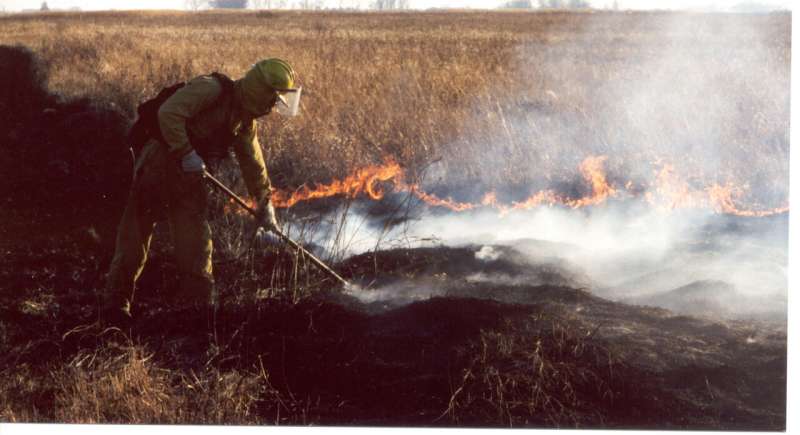Prescribed fires help native plants find mates, reproduce and flourish: study

For a prairie plant, a fiery love life isn't just fun—it's essential.
In a new study, researchers found that prescribed, expert-controlled fires are critically important to successful reproduction in prairie plants. Fires cause prairie plants to flower at the same time, which increases mating opportunities and seed production.
During the study, which ran from 1996 to 2016, researchers observed the sex lives of 778 individual plants on Staffanson Prairie in Minnesota. Throughout the 21-year study, conservation scientists conducted prescribed burns in nine different years.
"In most years, plants are isolated from other plants because few plants flower," said Stuart Wagenius, a Northwestern University conservation scientist, who led the study. "They don't get well pollinated, and they produce few seeds. In the summer right after a fire, however, many plants flower. They are not isolated. They get pollinated and produce many seeds. Synchronized flowering after a fire keeps populations healthy and averts local extinctions."
The study will publish this week in the Proceedings of the National Academy of Sciences. Wagenius is a senior scientist at the Chicago Botanic Garden and an adjunct assistant professor at Northwestern University's Program in Plant Biology and Conservation.
Tallgrass prairie is one of the most threatened and least protected habitats in the world. Over the past several years, native plants have been disappearing from prairies, especially those not managed with prescribed fires. These fires are not the same as the wildfires that make headlines in the news. Prescribed fires are a controlled application of fire by experts under specific conditions. They keep ecosystems healthy and actually prevent wildfires by reducing dried vegetation, which can fuel fires.
To better understand how fires might help revitalize these communities, researchers specifically followed Echinecea angustifolia, or the narrow-leaved purple coneflower. Widespread in the prairie and plains west of the Mississippi River, the purple coneflower is a model organism to study perennial plants in grasslands.
An individual purple coneflower plant lives for many years, without flowering every year. It's important for plants within the same location to flower at the same time as one another. This synchronization improves opportunities for bees to move pollen among plants.
"Fires serve as a signal for plants to flower, which we expected," said Gretel Kiefer, scientist at the Chicago Botanic Garden and coauthor of the study. "However, we didn't know that, within a season, flowering times would overlap a lot more after a burn compared to most years. This synchronized flowering improves pollination by bees, which is required to make seeds."
The researchers hope their findings will encourage more prescribed fires in prairies and other fire-prone habitats with a history of fire suppression.
"Rekindling fires may have widespread benefits for plant reproduction and diversity in fire-dependent ecosystems worldwide," Wagenius said. "Usually people think that fires help plants compete for better resources. This experiment uncovers a totally different additional benefit—more mating and better pollination."
More information: Stuart Wagenius el al., "Fire synchronizes flowering and boosts reproduction in a widespread but declining prairie species," PNAS (2020). www.pnas.org/cgi/doi/10.1073/pnas.1907320117
Journal information: Proceedings of the National Academy of Sciences
Provided by Northwestern University


















